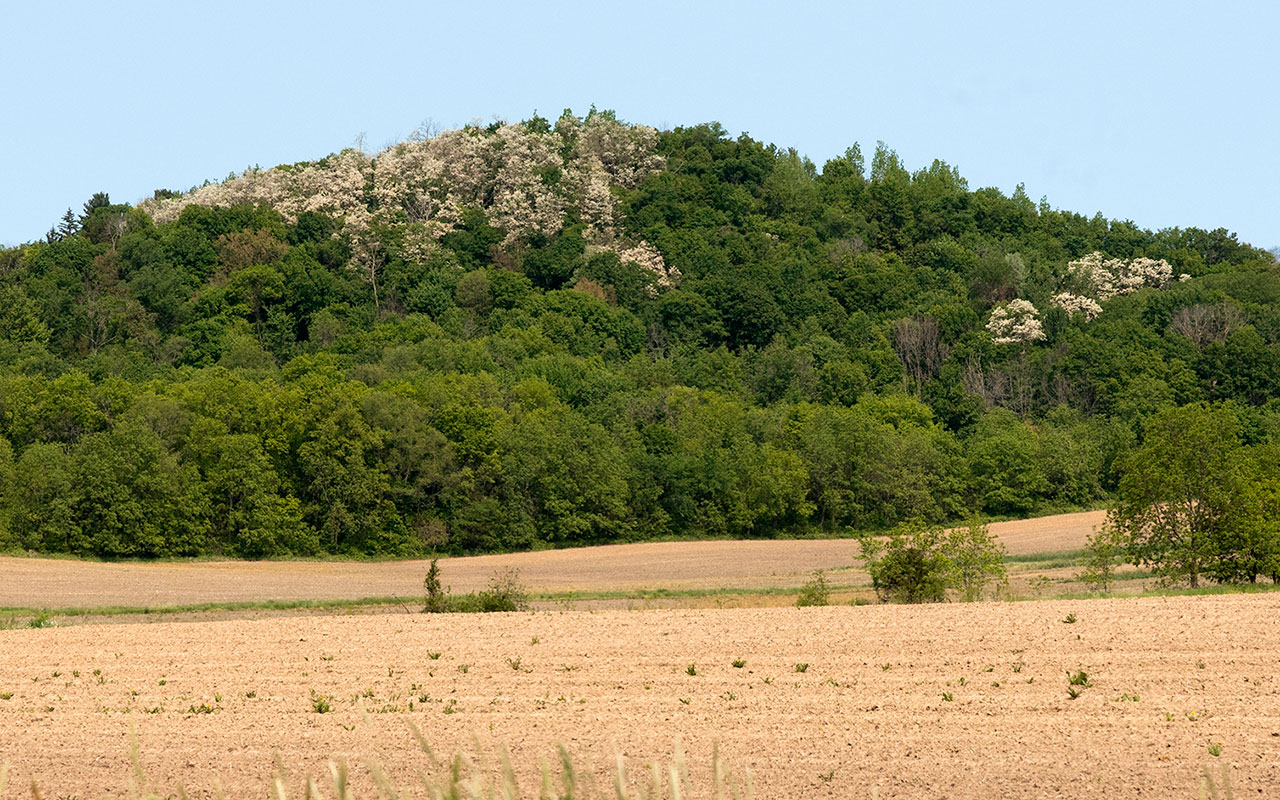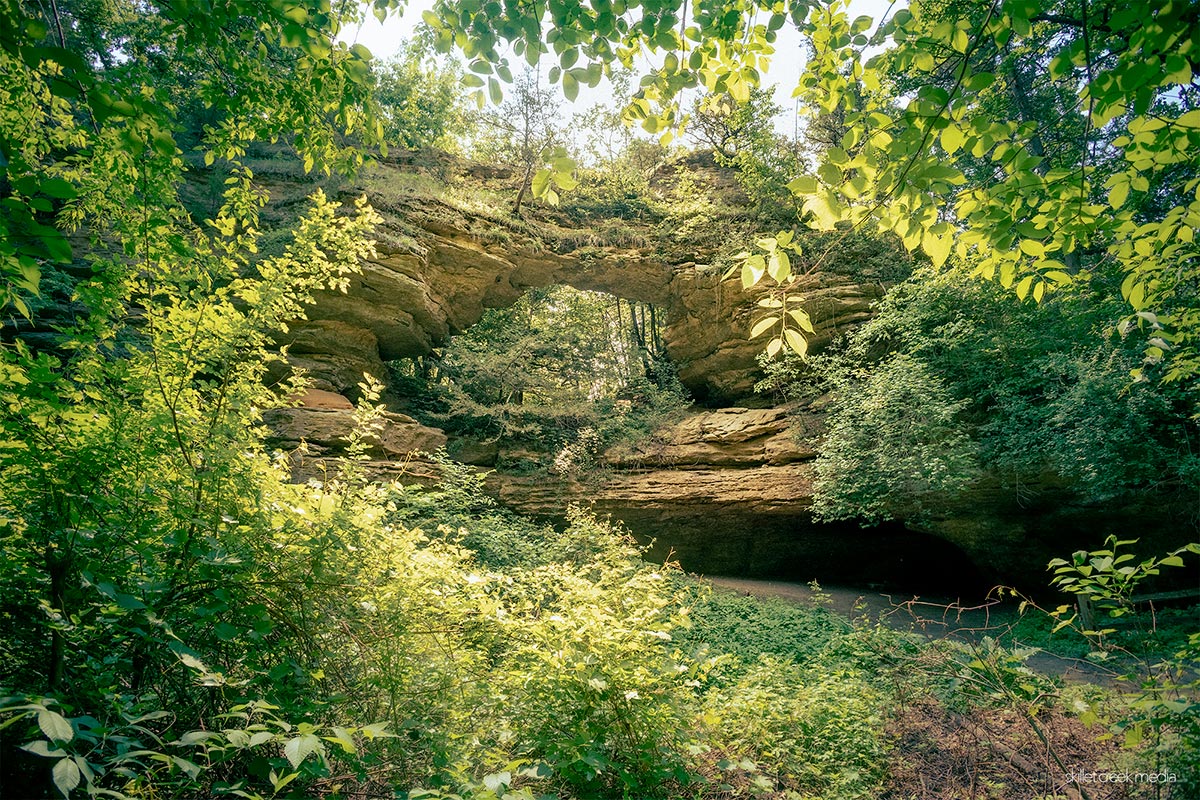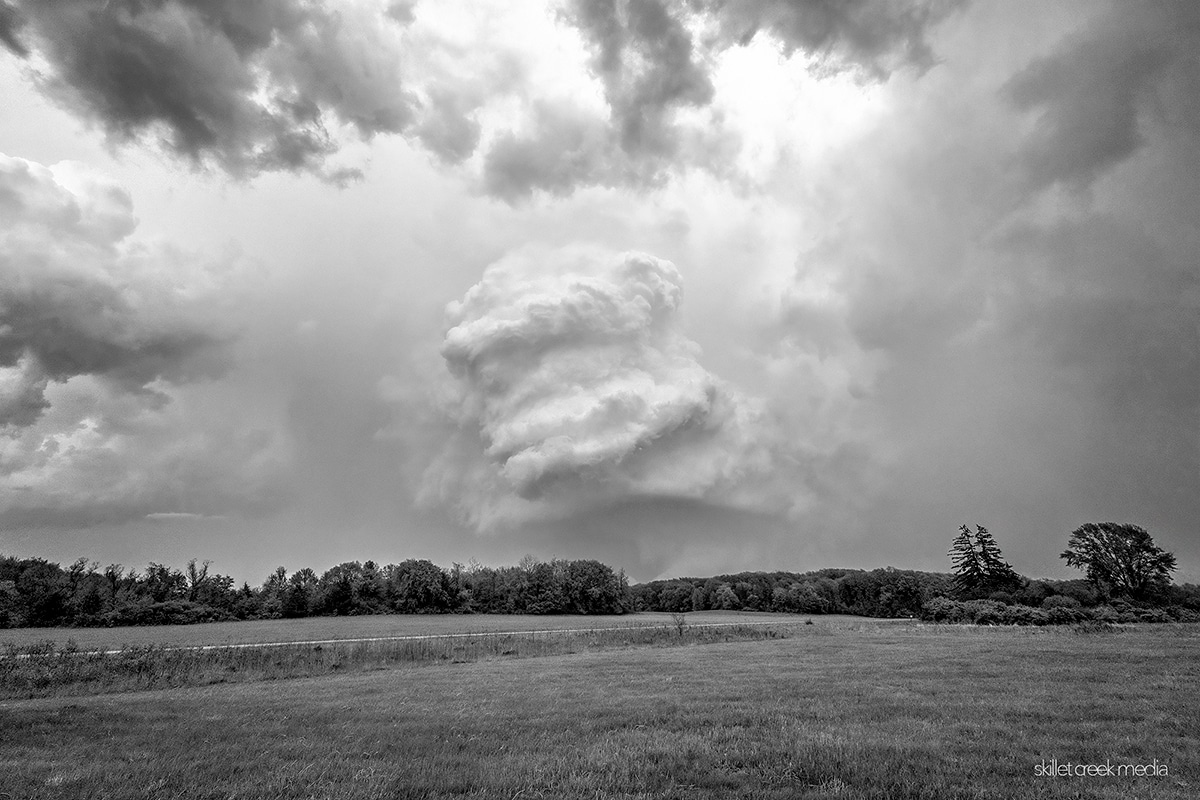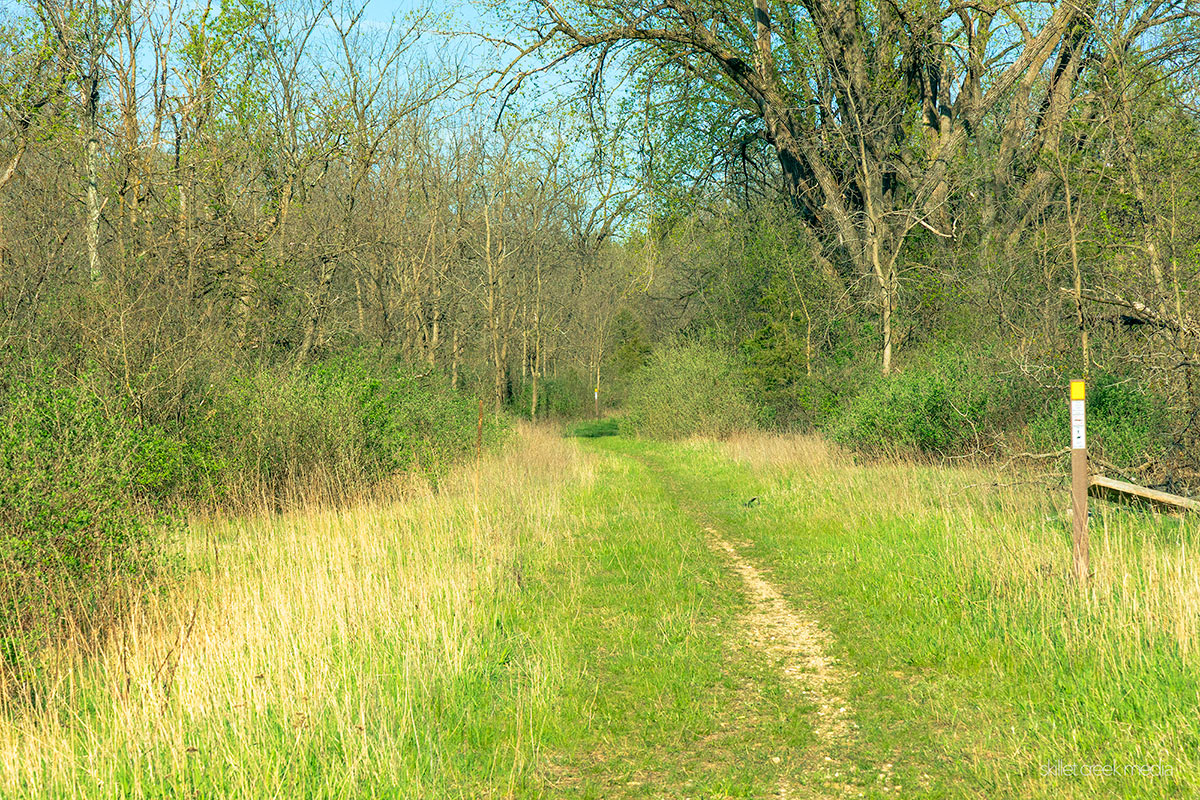Not far from the quiet village of Leland in south-west Sauk County, you’ll find one…

I’ve heard a lot of comments recently about the white trees everywhere. They really stand out right now as you drive around our part of Wisconsin! Some folks have been concerned when they see clumps of white trees in the distance. Others are just curious.
You may have seen our story post on Facebook yesterday, where I said these little islands of white on the hills look just like Minecraft’s Creaking Forest. And honestly, they do.
What we’re seeing could almost be called a “superbloom” of black locust trees. And if you were concerned, you’re not wrong to be—but maybe the reason isn’t what you thought.
Black locust trees are invasive here in Wisconsin. Once established, they can invade forests, upland prairies, old pastures, and roadsides. They spread aggressively by cloning themselves in tight clusters, suckering out from underground roots. In fact, if their roots are damaged, they often spread even faster.
The Wisconsin DNR tells us that neither cutting nor girdling is effective on its own. Burning and mowing can temporarily slow the spread, but long-term, those methods can actually make things worse. I’ll drop a couple of links in the comments if you want to learn more about control efforts.
So why are they standing out so much this year?
Well, the spring weather has been perfect for them. When black locusts get just the right mix of sun and rain, and dodge any late-season frost, they can go a little wild. This seems to be one of those years.
On the upside, their pea-like flowers are beautiful. Black locust blossoms have a sweet, floral scent, often compared to a mix of orange blossom, honey, grape candy, and freshly cut hay. The fragrance really kicks in on warm, humid days.
So no, our forests aren’t dying. But they are being quietly invaded by a showy, fragrant outsider. How’s that for mixed messaging?
More info
About Invasive Black Locust – https://dnr.wisconsin.gov/topic/Invasives/fact/BlackLocust
More from the US Forest Service – https://www.fs.usda.gov/…/Robinia-pseudoacacia.shtml

For nearly 2 decades the Skillet Creek blog has focused on 3 main goals; To inspire you to visit and explore the Devil’s Lake region, to help you get the most your visit by sharing tips, events, and other helpful information. Lastly to advocate for our environment & wildlife and talk about how we can keep our natural areas amazing now and into the future! That last goal can sometimes cause controversy, but it’s the only way we can accomplish the first two. – Derrick Mayoleth, Owner.




This Post Has 0 Comments